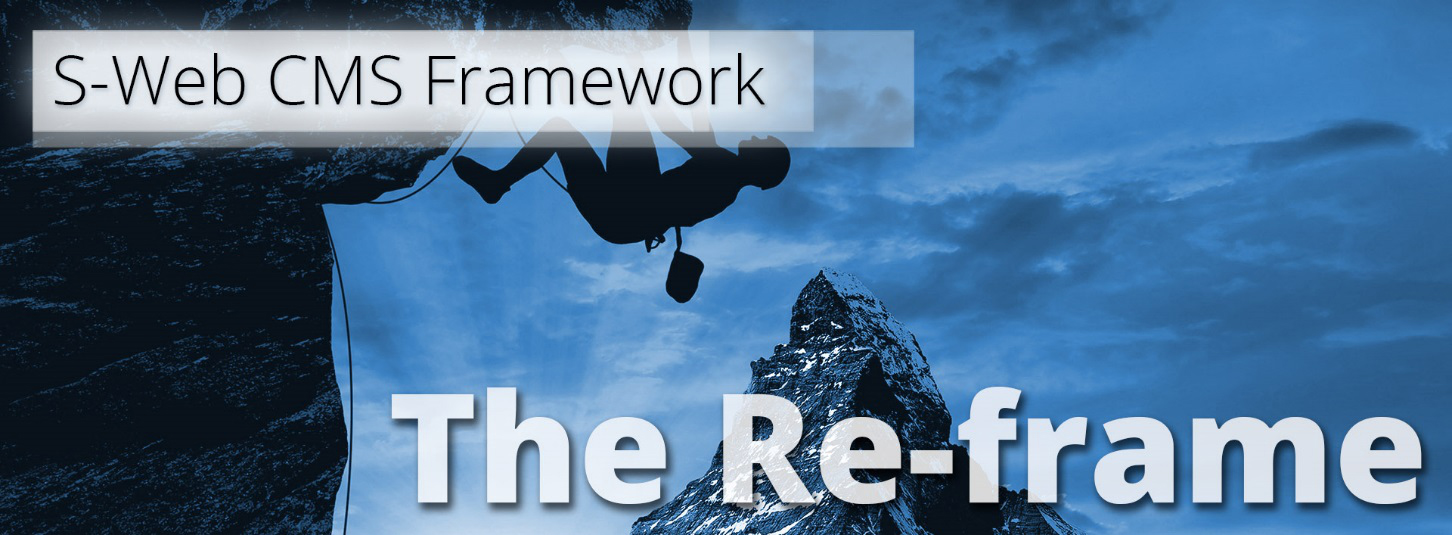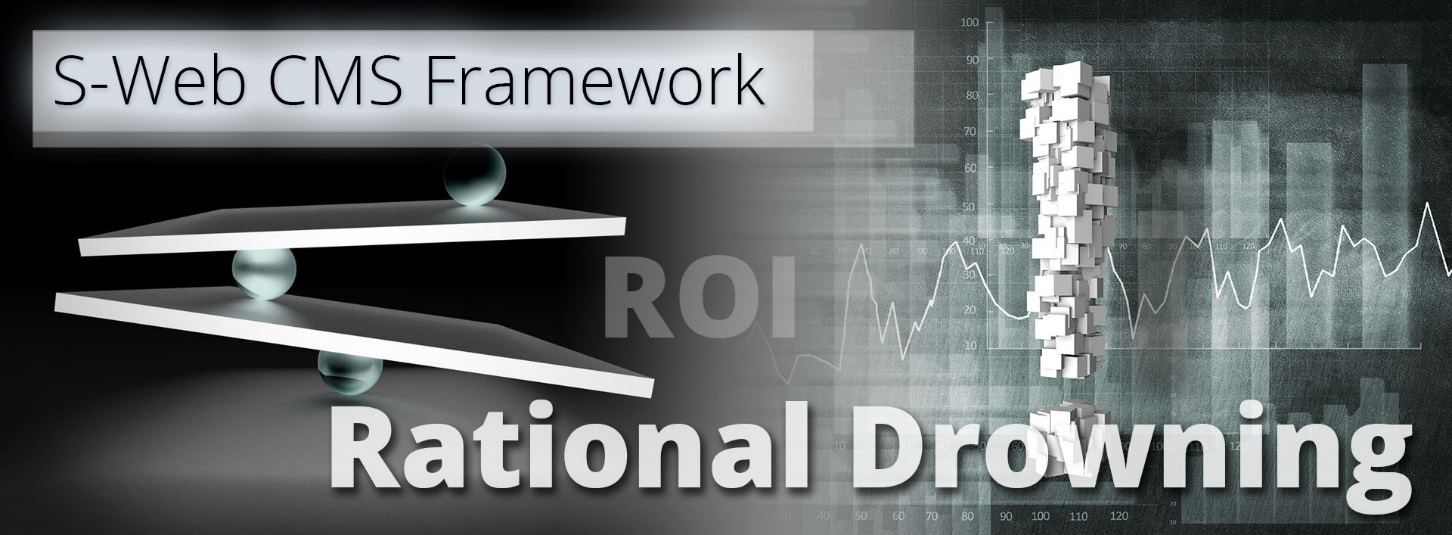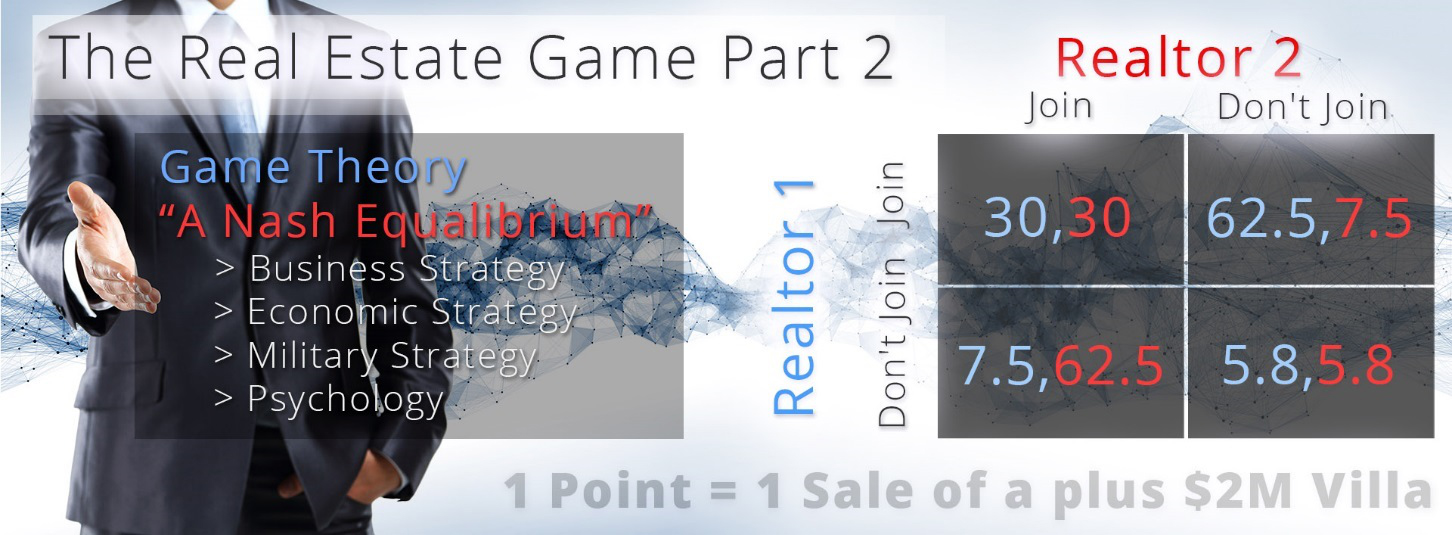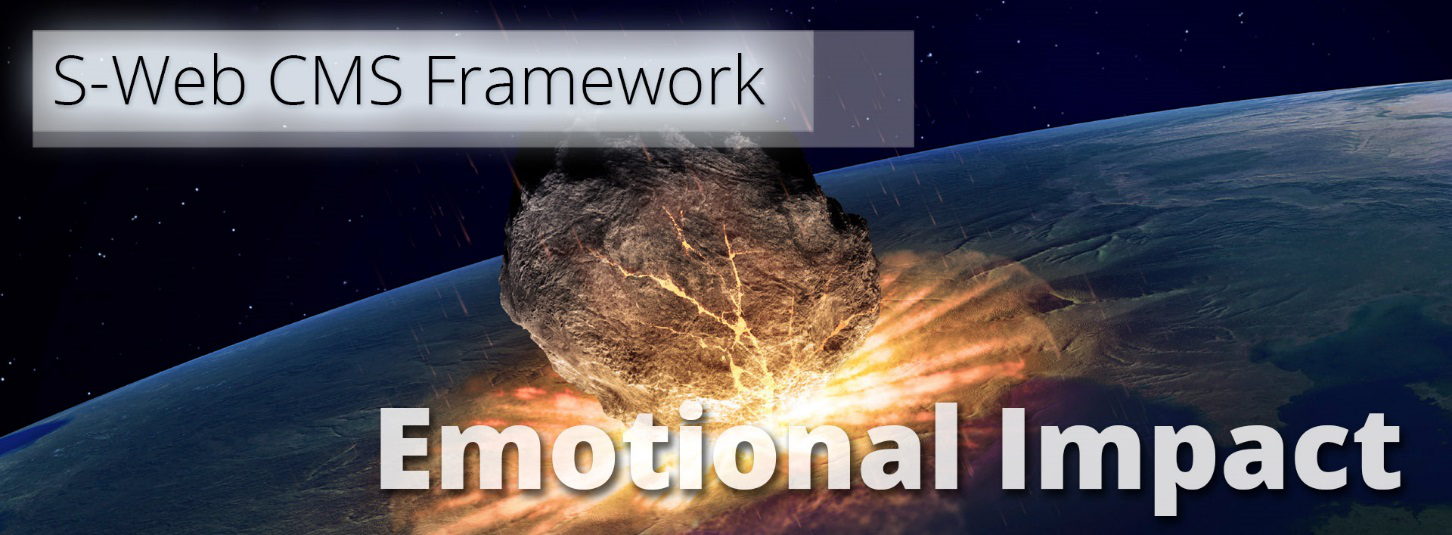s-web-cms-framework-challenger-introduction
Step 1. The Warmer

Index
Step 1. The Warmer
Step 2: The Re-frame
Step 3: Rational Drowning
Step 4. Emotional Impact
Dixon & Adamson:
‘Build credibility and show your prospective partners you understand their challenges.
It’s an approach we have dubbed ‘hypothesis-based selling’ rather than leading with open ended questions about customer’s needs, instead lead with hypothesis about customer’s needs, informed by your own experience and research.’
With a touch of irony, in making the case for this action, the first research we shall present is from the CIO Executive Board. It’s a little old, but it makes the point.
In 2009, the CIO Executive Board found that only 26% of business leaders rated their IT departments as effective. And in a study of 5000 staff members: 76% of staff disagreed with the statement: “has their job performance improved due to a new system delivered by IT.”
Websites, Integrated Software, & ‘Wow & Awe’
When it comes to creating a new business or product line (in this example vacation rentals) in a market that is internet and affiliate driven; in most cases, the first thing most customers see (be them direct or trade) is one’s website. The more engaging and/ or inspiring your website, the more of an emotional connection you will make, and the more likely a customer is to enquire and book. We call this ‘Wow & Awe.’
Once a client has enquired, it is then down to the skills of sales representative to use the systems at their disposal to source and present stock (villas/exclusive use safaris, and private islands) to the client, and seek to make the booking.
Before going into further detail, we need to describe what our definition of a system is. In context o S-World Villa Secrets, a system can be software, a part of the website, a human resources (staffing), or anything that assist the sale process; even just ‘picking up the telephone,’ if this action is prompted by the software, or part of the operations manual.
Whatever systems one uses, one will almost always refer to a website. On the telephone, one will ask a client to look at pages ‘x, y, & z,’ whilst talking the client trough the options. By email, one will provide links to the website. CRM software (customer relationship management) should be intrinsically connected to the website, and your accountancy software should be equally connected.
Why should CRM & accountancy software connect to your website? Well, there are many reasons; but for one, there is no need for data inputting (from website to CRM or accounting software), and this adds a layer of security that greatly reduces errors and fraud, it saves staff time and enables one to do the job of many. In addition, if financial and CRM data is connected to your website, one can present the data to the client in real time in their client suite.
Getting back to the website itself & ‘Wow & Awe!’
If one was in the mood for a new website suited for a large vacation rentals or real estate company, one needs a website with a CMS (content management suite) that is not only simple for staff to use, but also it should be kind of fun, and (if possible) addictive. As in our 17 years of experience with various companies and websites from www.CapeVillas.com to www.ExperienceAfrica.com & www.Cape-Town-Luxury-Villas.com to www.VillaSecrets.com, we have found (in all cases) that a company that adds about 100 properties a year will double the performance (gross profit), compared to a company that only added a dozen or so properties. The more engaging, simple, and quick to use the CMS is; the more it will be used by staff.
As David Hoffeld presented in his book ‘The Science of Selling,’ one must avoid anything boring, as neuroscientist John Medina confirms: “When the brain deems something uninteresting, it will disengage from it.”
In short, Bored Clients don’t buy and Bored Staff don’t use…
Be it the CMS or the CRM, getting staff to use the systems in the first place is often a struggle, and chances are whoever created their CMS was not thinking about how to also make it fun and addictive, in many cases it’s as much as one could expect, for it to just be simple.
There are three types of CMS
1. CMSs like WordPress, which help web designers make very attractive smaller websites.
2. CMSs within bigger custom-made websites, so staff may add products to the website.
3. CMSs for creating mobile websites often used to upgrade older websites and legacy systems.
1. CMSs, like WordPress, which help web designer make smaller attractive websites.
In the case of WordPress, the CMS is very powerful and adaptable. And when using it, one can visually create just about anything, and it comes with thousands of different themes that create the most up to date look for a website. However, as the CMS for WordPress has been designed for any situation, it has a thousand functions that are not needed to add a property/product that can get in the way. And so, one needs to spend time teaching each staff member how to use it.
We did this a few years back when we created the Villa Secrets Blog, http://blog.villasecrets.com. If we look at an individual product page such as this one http://blog.villasecrets.com/african-safari/ulusaba-african-luxury-safari-in-sabi-sand, we can see it really does make the property look good, and these enhanced pages went down very well with clients, gaining an emotional ‘wow & awe!’ response every time.
The trouble was, the pages took a long time to make, even when one has all the photos and copy; to add all the photos and copy to the websites took over 90 minutes; and to make the image slider at the top, took over two hours for an experienced WordPress web designer. So, we could not add a page quickly and we could not add the image slider at all without assistance from an expert.
In addition, WordPress is not built for many products; unless you create your own theme, one can’t customize the file structure. It does not have a nice clear list of pages/properties added, and the way photos are stored is not ideal either. But the bigger problem was that despite having a standard MySQL database that one can fetch data from, when it came to connecting systems to WordPress and adding data to the website, one needed to create a dedicated plug in, each time, for each system which is a time-consuming specialist discipline.
And for these reasons, despite the great looks and versatility of WordPress for making smaller websites, blogs, or bespoke displays (if you are reading this on a website, then you are reading this on WordPress); it’s not a solution for creating larger websites that require multiple API and other web-based connections to software and systems. Unless one is happy to only use the systems that have already been created as plugins, which are an awful lot, but not nearly what we desired or needed.
Maybe in a few years, this may change if everyone makes a plugin for WordPress for every system and people made themes, specifically for bigger companies. But right now, it’s not the right tool.
2. CMSs within bigger custom-made websites, so staff may add products to the website.
With WordPress and similar CMS web solutions off the table, to add a simple to use CMS for staff to use, one needs to look at a custom-made website, or an adaptation of a custom website already created by a web developer.
In many cases for large custom-built websites, a web developer will use a web framework such as Zend. A web framework is designed to support the development of web applications and alleviate the overhead associated with common activities performed in web development. In other words, for items like CMSs, enquiry pages, currency convertors and other functions or pages; one customizes a page that has already been made within the framework. And whilst this is useful, the pages created are mostly uninspired and often boring, and in particular the CMS and other back end systems.
To customise the framework to create the product pages to the same degree of ‘wow & awe!’ as seen in our WordPress experiments, would take a long time, require various experts, and be expensive. In addition, if one wishes to add to the website, say for instance an ‘online magazine,’ or a system for agents to create dedicated webpages for clients, (particularly useful in the mobile world we live in.) The reliance on the web framework by the developer may hinder such progress. And of course, unlike WordPress, it’s completely impossible to add to the website design in any way, without the web developer.
Lastly, websites get old, both in look and code, and only the most successful companies can afford to completely overhaul the website every few years.
3. CMSs for creating Mobile websites
Lastly, in the world of web frameworks and CMSs, we have the increasing important mobile frameworks; and in this category, http://jquerymobile.com is the market leader and (like WordPress) is free to use.
One does not need such a framework for WordPress and other ‘all industry’ modern CMS web frameworks. But one does, if one needs to attach a quality mobile component to Zend and other frameworks, or custom-built websites that did not build for mobile, or legacy (old) websites that are all poor on mobile.
We tested JQueryMobile in 2015 and created a good looking mobile website for Villa Secrets. See http://m.villasecrets.com (only view on mobile, only 80% complete), but despite its good looks and simple functionality, working in this way was not ideal, as one effectively has two different websites. And when it comes to development of adding a new section such as the previously mentioned ‘online magazine,’ one needs to develop it two times; once for desktop and once for mobile, so increasing the cost and the chances of something going wrong. Plus, it’s poor SEO say Google, as a link to one page on desktop will not count to the same page on mobile and vice versa.
In Conclusion
To create a large-scale website with more than 100 products, including a custom-built attractive simple CMS that staff can use without need for training that has the very best design (as featured in the best WordPress themes) that can be connected via API to booking systems to provide online availability & booking, which also performs and gives ‘wow & awe’ across the variety of device sizes from desktop and hi-res laptops, to tablets and mobile; you need to hire a top web development company, who already have such websites in their portfolio, and that will cost a lot of money.
If only there was a system that has the best of all worlds, the Wow and Awe of WordPress, the simpler XML connectivity of custom websites, the mobile presence of JQueryMobile, with a CMS that was simple, kind of fun to use, and even addictive.
Step 2. The Reframe

Note: “Re-frame” should be “Reframe” in the image above.
Dixon & Adamson:
“Building off the challenges presented in step 1 introduce a new perspective that connects those challenges to a bigger opportunity than hadn’t been previously considered. This is not the place to be timid as the entire approach rests on your ability to surprise and make readers curious for more information.
However, the reframe is not about the incite itself, it’s just the headline, and like any good headline your goal is to catch your customer off guard with an unexpected viewpoint, to surprise them, make them curious and get them wanting to hear more. The response one is seeking is for the reader to say: ‘Huh, I’ve never thought about it that way before.”
Limited only by our imagination
At the end of the last step we postulated: If only there was a system that has the best of all worlds, the wow and awe of WordPress, the simpler XML connectivity of custom websites, the mobile presence of JQueryMobile, with a CMS that was simple, kind of fun to use, and even addictive.
By Creating a system that has the qualities that WordPress provides, but with a custom-made CMS that is not only simple, it’s fun to use and addictive; one can create a framework from which you can develop software into the system in a way that no other company has; and in a way, that’s infinity simpler than working with a handful of different systems by different developers connected together to create a complete solution. In development, simplicity is a very valuable commodity.
If one develops software inside the website (in the S-Web framework) so that the software was an extension of the website, one could build a CRM into it. If one could do that, one could automate the website, one could use the enquiry data and search criteria to create automatic communications with clients that looked and appeared human, and it could automatically email bespoke villas (properties not on property inventory systems), and as soon as the availability was confirmed it could send the client an update.
One could automatically create the perfect email for a client, and present it to agents who are out of the office or out of work hours, which would only take them a minute to check on their mobiles and send as a reply. We know from experience that agents that answer enquires and respond to communications out of work hours can double the sales figures of those that don’t. So, it’s no small point.
In fact, one could do just about anything, if there was just one system instead of many. If the software was a part of the web framework, one’s limitations are no longer technical in nature, rather they are only restricted by one’s imagination.
What if one could create a company controller within the CRM that organised the functions of all staff and management, and what if it could give a score so that each day, each team member had the opportunity to score more points and win the day.
What if… What if…
What if when one added a product to the CMS, it gave 10 points, and then bonus points each time someone viewed the page; and 100 points every time someone booked it, and those points were liked to profit-share, bonuses, and commission? This changes the dynamic of adding properties and searching for mandates, and brings the whole team on board, and focus them on finding properties that will make bookings, as each booking made adds points and so more profit share.
What if there was a management game running in the background that showed everyone’s score and a bunch of tutorials in how to increase it? That when acted upon improved the bottom line of the company in over 80 different ways?
Would that make the CMS fun?
Would that make it addictive?
Would that focus the team on tasks that were important to the bottom-line?
Dixon & Adamson:
So what’s next…
You have shown your customer a different way to think about websites CMSs and systems, now you have to show them, why it matters!
Step 3. Rational Drowning

Dixon & Adamson:
Next, show prospects the numbers behind why they should think differently.
Rational drowning is where you lay out the business case for why the reframe in step 2 is worth your customer time and attention.
In 2015, in a meeting with Rhino Africa (arguably the world’s No. 1 safari orientated tour operator), Rhino Africa revealed that their ROI (Return on Investment) from Google AdWords was over 600%. This was at first puzzling, as we fancied ourselves as masters of Google AdWords, but were only getting a 300% to 400% return. This puzzle was made the more perplexing due to greater completion for African Safaris vs Cape Town Villas.
However, it did not take long to work out why they were getting this 600% return, it was their systems, which they made mention cost more than $1million. It was Rhino Africa’s systems that turned what would have been a 300% return into 600%.
All one needs to do to move that 300% to 600% was either double the amount of enquires one received from their website adverting or double the amount of bookings made from each enquiry.
Or if one could both double the amount of enquires one received from their website and double the amount of bookings made from each enquiry, one would turn that 300% into 600% and then 1200% (a 400% net gain on the status quo).
Intrinsically linked into the S-Web CMS Framework is what we call ‘The TBS™’ (Total Business Systems); which is all the web components and all the software described in this book, as summarised in Chapter 14. This chapter provides over 80 separate systems, from CMS to CRM to staffing. For instance, a call centre and live chat; open 7 days a week, in European and US time zones, speaking different languages to assist the sales process, we believe may increase ROI as follows:
| Villa Secrets Call Centre & Content Marketing | |||
| 24/7 365 Call Centre and Sales Team |
40.0% |
13.2% |
|
| Foreign language Sales Teams |
35.0% |
11.6% |
|
| 24/7 Live Chat (USA, Asia Time zones in Multi Languages) |
25.0% |
8.3% |
|
| Content Writing 1 |
20.0% |
3.0% |
|
| Subtotal |
120.0% |
36.1% |
The figure on the left (120%) is the figure we feel can be achieved after a few years with an experienced 24/7/365 team. Whereas the figure on the right (36.1%) is what we expect at the end of phase 1.
Please note that 36.1% is a low estimate considering the huge advantages it would bring. We always err on the side of caution when making software ROI forecasts.
Next, we see the ROI that is expected from the web framework itself, again a low estimate, as this is in comparison to the prototypes www.capevilas.com and www.cape-town-luxury-villas.com, which are now both outdated and are just awful on mobile.
| S-Web Villa Secrets Web Framework | |||
| Superior Visual Experience |
15.0% |
11.3% |
|
| Greatly Superior Mobile Experience |
20.0% |
10.0% |
|
| Advertise on Mobile Platforms |
10.0% |
7.5% |
|
| Subtotal |
45.0% |
28.8% |
In total, there are currently 88 different single systems that combine to make the following:
| Total (Complete or in progress Systems) |
699.5% |
248.6% |
|
| Other TBS™ & M-Systems |
488% |
64.5% |
|
| Competitors and Other Negatives |
-225.0% |
-113.5% |
|
|
Total |
1122.0% |
208.90% |
Note: The Total I get when I calculate are “962.5” and “199.6”in the columns above.
This includes a significant overestimate of negative factors that could be created by competitors or others.
What this is telling us is that when working on lowest success probabilities, at the end of phase one, we should expect to increase ROI from online and other adverting by 209%; and that by the time, we have completed the entire system, it can create a much greater affect.
A 209% increase to an average 300% ROI from Google AdWords changes the return to 627% return; and as importantly, makes lower ROI adverting (such as advertising in Condé Nast Traveler) into profit making advertising choices.
Primary Network – Villa Rental Agency Returns
Scenario 7

In 2014, we launched the prototype for Villa Secrets www.cape-town-luxury-villas.com. And in 2015, using only Google AdWords, it created almost as much income as www.capevillas.com, which had 13 years of trading experience. Collectively, the duo of websites had only one rental mandate and no systems whatsoever. The combined GP (Gross Profit) was just over R 3 million / $230,000.
In 2016, we created 6 forecasting scenarios that used different strategies. And as we did, the Villa Secrets business plan became more detailed, to the point where it is now longer than the average novel.
In Chapter 18, we present ‘Scenario 7’ and the first phase of the Villa Secrets primary network offer which adds 7 more websites; all of which will use the new ‘wow and awe’ web framework. In addition, we desire the managing company to secure 6 exclusive rental mandates each year (see Chapter 3) and we have the S-World TBS™ systems improving all returns by up to 209%.
Phase one is to achieve R10 million / $765,000, and given all the above, that’s a simple enough statistic to agree upon; given that just two sites with one mandate and no systems made R3million / $230,000. Then, 9 agency websites, 6 mandates each with their own website and dedicated marketing, multiplied by the 209% worth of systems.
In Scenario 7- stage 1, shareholder profit is estimated a R2.7million / $200,000. However, it is recommended that all profit in phase one be used for profit share and mandate marketing, as the point of phase one is to arrive at stage two as quickly and efficiently as possible.
By rights, in stage 2, we should increase the S-World TBS™ profit multiplier from 209% as more systems will be completed, improved upon, or added to. However, as we really did not need to, we just left it at 209%. But even with this limitation, when including another 6 rental mandates, stage 2 gross profit (estimated for 2020) is just shy of R40million / $3million, with shareholder profit before profit share at R14million / $1million. At which point, the division becomes worthy of the attention of the real estate companies C-Suite officers.
The complete cost for the primary networks agency websites and all software systems (Chapter 20) is R2.2million / $167,772, plus a 12.5% of GP (equivalent to a 2.5% franchise fee) ongoing development contribution. With only 25% R550,000 / $41,943 payable on signing, with the balance paid in 12 discrete steps over the following 18 months, each step liked to a website or software system being completed per the development timetable.
Skipping past stage one, as profit is desired to be reinvested, if we compare the cost of the primary network R2.2million / $167,000 to the stage two, Scenario 7 projection of R14million / $1million, we have an ROI (Return on Investment) of 670%.
To put that into perspective…
If one were to put $167,000 in a US or UK bank, one would receive between 1% and 2% interest each year.
A good return from investing in the stock market is 10% per year.
A fantastic return from the stock market is 18%.
Villa Secrets Primary Network 670%.
Sounds too good to be true? Well, really, that’s the point. That’s what disruptive change is all about. So long as the real estate agent can bring in the 6 rental mandates each year, which given we present 19 different ways to acquire mandates, and most agents at the real estate company will likely know at least one prospect, is more than achievable. In fact, it could be doubled, or even trebled.
However, another way to look at it is not that one is making a 670% return, but instead that one is making a reasonable return on an opportunity that should cost over $1million in the first place. So, instead of a 670% return, one is initially receiving a 670% discount. (See Chapter 20 for valuations of the true value of the primary network opportunity.)
Chapter 19. Realtor Systems and Wins

Unlike the 7 villa rental forecasting scenarios which are based on decades of expertise, various prototypes with various managers; when it comes to for sale mandates, we do not have a crystal ball. But we can be sure that most rental mandates will turn into sale mandates for the following reasons, and then apply a formula that is relative to how many mandates the entire local network is estimated to gain.
Villa Secrets has a unique ‘rental mandate turns to sale’ commission system, where over half of the rental commission is used for what we call ‘Mandate Marketing’ and half of that is spent on ‘Prestige Marketing’; which puts the villa in magazines like Condé Nast Traveler and Vogue, and prime placement in the Villa Secrets Coffee Table books to be compiled with other items into estate agents pack’s, for use if and when the owner wishes to sell, or if a high roller buyer is interested and offers top dollar for a villa that is for sale, but only at the right price (investment properties).
In Chapter 19, we break into game theory to see how this will impact real estate agents. Below, we see a game we are developing. The starting conditions are that in Cape Town, including the Atlantic Seaboard, City, Waterfront, Constantia, and surrounds that 100 villas are sold a year for over $2million. And that there are 3 market leaders that account for 50% of sales, and a collection of about 7 other companies that account for the other 50%.
The Estate Agent’s Game 1 – Capture Market Share

Above, we zoom ahead to 2021 and assume Villa Secrets has delivered on its network ambition, and a large network of companies and individuals have collectively amassed 100 villa rental mandates, of which fifteen are sold via the Villa Secrets partnered real estate agency (the primary network).
In this scenario, we deduct the 15% loss in market share evenly across all agencies, so the three big agency decrease their market share by 2.5% each; which is the cost of not joining the network. There is a dominant strategy for only one real estate agency to join the network; and in that case, it would increase its market share by 12.5%, increasing their sales of villas over $2million from 17 to 29, and an increase of 75% to the agency itself.
If two agencies joined, both would increase market share by 5 villas over $2million from 17 to 22, an increase of 30% per agency.
This would be a great result for any real estate agent, a 30% or 75% increase in sales of the most expensive properties. And as success breeds success, this figure could increase as owners come to Villa Secrets ‘primary network,’ not just to rent but also to sell.
Another more ambitious game is created that includes the factor of ‘Jet Set’ marketing; which seeks to connect with private islands, exclusive safaris, and other expensive properties to bring more Jet Set clients to Cape Town in the first place, not taking market share but increasing it.
If we get this right and double the amount of Jet Set clients, we expect a far higher return for our partner real estate agents, and a Nash Equilibrium (a win/win) for all real estate agents; regardless of whether they are in the network or not, albeit (as we can see) the benefits of this scenario are colossal for the estate agency or agencies that join the network.

For more details, see Chapter 19.
Step 4. Emotional Impact

Dixon & Adamson:
Emotional impact is all about making absolutely sure your customer sees themselves in the story you are telling. Now you’ve got to make it personal, this is where story telling really comes into play. As the name implies, emotional impact isn’t about the numbers, it’s about the narrative, you’ve got to paint a picture of how you and other companies went down a painful path that the customer will recognize.
Later, in this book, we present two emotional impact stories; which, for now, we shall just touch on before presenting our ‘emotional impact’ narrative that is specifically relative to the S-Web CMS framework.
1. Key Staff Leaving
In Chapter 2, we present an ‘emotional impact’ narrative and solution to the problem of losing one’s best agents; who either start their own competing business or join other competing firms, often taking with them one’s database of inventory and client list, and always losing the company money.
This story should feel immediately failure to estate agencies and rental agencies alike. Indeed, this is a familiar story in most businesses, which we counter by including key staff as shareholders in one or more of the primary network’s 8 agency websites, or by recruiting staff to the network as individual network/website owners. This not only avoids the temptation to start their own businesses as they already own the business, it also is a primary building block for individuals to reach their potential, as everyone works harder when they are running their own business and not working for the man (or woman).
In addition, the systems are created to assist one staff member to the job of three; including answering the most important enquiries and replying to the most important conversations, out of hours assisted by the Nudge Ai, are an equally good reason for personnel to stay put; as if they leave, they will no longer have access to the software, and will be less productive.
2. Accounting and Admin Nightmares
In Chapter 6. S-World TFS™ (Total Financial Systems), we present a harrowing tale of 8 years of financial inefficiency created by 6 financial managers, accountants, and bookkeepers; who should have known better, but did not, which lost or cost CapeVillas.com over R6million / $460,000. Which was not only a huge amount of money to lose, it was also a huge amount of money that could have been invested into the business to create wins.
This accounting nightmare was centralised around human error and the Pastel financial software that, come rain or shine, was completely unfit for purpose.
For this reason, in 2010 after the 5th biggest firm in South Africa ‘BDO’ has make a R2million / $150,000 VAT error (not in our favour) and had cost another R2million / $150,000 in billable hours and associated expenses, I decided I simply could not carry on with the status quo and I needed to create our own financial systems; which alongside the affiliate web site idea gained from working with Sotheby’s turned into the first S-World business plan in February 2011, which over the past 6 years has developed into the plans we are presenting right now.
3. Web Developer Frustrations
To refocus this chapter to the S-Web CMS Framework, we shall share the frustrations we had with web and database developers, that led me (in 2013) to doing it myself. I was competent with design, web design, system design, Flash and HTML; but my database and software development skills needed to be learned almost from scratch.
But before we begin, let’s hear once more the supporting data from the CIO executive board:
Only 26% of business leaders rate their IT departments as effective.
76% of staff disagreed with the statement: “Their job performance improved due to a new system delivered by IT.”
In 1999 after 10 years working as a Cubase network programmer, like many in my profession I (Nick Ray Ball), swopped to web design and development, and became an immediate expert at a new image rich web design system called Flash; as it was timeline based and very similar to Cubase. In the year 2000, after attending a lecture by Macromedia on Flash in London, I set myself the goal of making a virtual tour from it. And by 2002, I had done so, and we were the first company in the world to do so.
During this time, I had emigrated from London to Cape Town and created the web development company ‘Cape Go.’ However, the web was only taking shape in Cape Town and no matter how good our work was, it was difficult to get clients. So, we started developing websites for ourselves and running the business.
In those early days, 2000 to 2003, I created the CapeVillas.com website and others in Dreamweaver (HTML) and Flash, which we were more than competent in. But in 2003 as CapeVillas.com became a success, the need arose to build a database driven CMS (content management suite) for Cape Villas (as it was becoming labour intensive making each page individually and updating pricing) was also a problem. Fortunately, our first venture into database driven web development was very painless and free, as a local database web development company loved our website and in particular our virtual tours and offered to add their CMS to our website for free as a portfolio exercise for them.
Soon after, we swopped to another company to build further functionality and this was also a smooth process. And by 2005, we had added a property management system and other software components created as part of the CapeVillas.com website. But in about 2007, the company we used split up for some reason, and we needed to find new database developers. We went to the companies we knew had a good reputation, but they pronounced that the PHP code in our website was old and messy, and needed to be completely re-written; and in fact, we needed a completely new website.
Whether this was because they were trying to up-sell us, or whether they just weren’t that good, I will never know. But it happened more than once. Indeed, our previous developers had been trying to get us to replace our website with a new one for years. What I do know now is that we never did replace the website, and my current programmers don’t have any problem working with it. Albeit it definitely needs an update from a visual perspective and were gearing up to do that.
Not being able to find a development company who could or would work on CapeVillas.com turned out to be a very expensive lesson; as with no database developers, we could not continue to improve the system. And in 2010, when a competitor brought out their version of a property management system for public use, we were no longer the leaders in vacation rental technology, and they forged ahead, whilst we did not.
However, this is not the story I am telling… Going back to 2009, two years had passed without development. But in those years, we created The Cape Villas Magazine and distributed it with Condé Nast Traveler to great acclaim; seeing big brands like Bulgari ask to sponsor the follow up and two of the estate agents we are currently considering to operate the Villa Secrets ‘primary network’ (Seeff & Sotheby’s) asked us to assist their set up of villa rental departments, on a profit share basis.
Regarding Bulgari and the follow up publication, we worked out that we would make better ROI from our publishing and distribution if we opened up our market, instead of luxury villas in Cape Town, luxury properties across Africa. Which lead to the creation of ExperienceAfrica.com, and while we could not develop CapeVillas.com, we found a developer who could create the Experience Africa website the way we wanted, so we started to create that website and brand.
Our financial manager at the time, who had come to us a year before from a company 20 times our size, had informed me that we would have over R1million / $75,000 in the bank if all debits were paid and all credits received. So, I went ahead with the development of the website and the brand, including a new shop, fixtures and fittings, and a department of 4 very capable personnel, plus a dedicated Flash/graphics-based web designer.
Initially, the new website was being developed per my designs and specifications, and we spent about 6 months getting it looking really good, but I did not give specifications for the CMS. My thinking was the CapeVillas.com CMS that was created in 1999 worked well, and I just presumed that 10 years on, a professional web developer would be able to improve upon it.
Big mistake!
By the time, we had done the product research (picked our favourite 50 or so safaris, resorts, honeymoon villas etc. and made the websites UI [User Interphase/what the public see]) and opened the new store. We started having problems with the CMS. At first, I just thought it was teething problems. But as time passed, things did not get better. And every other day, another staff member would say that he/she added a property, but then it disappeared, or it would show an error signal.
It was such a shame as the design was awesome, and the big pictures and Flash animations at the top of each products page made its product pages superior to all competitors. In fact, the design was so good that Sotheby’s Realty Cape Town entered into profit share venture with us and we created them a duplicate version of the website called AfricanConsierge.com. And this was the bright idea that this book is an extension of, a website that could be recreated again and again for many companies on a commission share basis.
But alas, the developers never did fix the bugs and neither our staff or the staff at Sotheby’s could add properties. And as money was getting tight, I literally had to scrap the entire brand, let all the staff go; and a year later, I scrapped the entire website. Total losses over R1million when we include the shop and staff.
Was it foolish hiring the staff and shop before the website was live? Sure, it was. But as far as everyone could see, it was a great website, and I really did not anticipate that a CMS would be such a problem.
As it turned out, the problem was not the programmer, it was with the developer who would not let us speak to the programmer for reasons I put down to him, worrying we would offer him a job I guess. But without access to the programmer and working through a middle man who did not really understand the process, made it impossible to fix the bugs in the system.
To make matters worse, the developer eventually worked it out, and brought out a competing villas website, and teamed up with one of our best sales people to start a rival business; that to this day is still a competitor.
This was not the only incident of this kind. In 2003, we lost our lead developer to a real estate company who had at first asked to work with us. Working under the radar, he quit our company to work for theirs and created a website for them including all the villas we had fought long and hard to identify; that, at the time, became our biggest competitor and is still competing today.
And again in 2010, our web designer was lured to another company and took with him our entire portfolio of photographs and properties list, and created another rival site, albeit this one never got off the ground.
In conclusion
At the end of 2010, what with the continued problem of losing our best staff, the ridiculous and reckless behaviour of accountants and their chosen software that was not fit for purpose, combined with both web developers failing us and/or starting new companies in competition to us,; it was time for a change. And so, I retired from the front line of Cape Villas and decided I needed to go back to my programming and web design roots, create a system that elevated all the problems mentioned so far, that contained a CRM (customer relationship management), financial software and connections to PMSs (property management systems) and GDSs (global distribution systems), all as one system.
In March 2011, the following plan was created initially for VIRGIN
www.s-world.biz/TST/The_Virgin_Business_plan_in_Retrospect.htm. And since that day, we have worked it and got better at it. First, working out the network strategy, incorporated some highly advanced mathematics to create the ‘big picture’ of how we would like the international network to be, then developing prototype web CMS Framework, then adding the PMSs & GDS, connectivity and a JQueryMobile website, then turning the whole project on its head, working Mobile First. Then, turning the project on its head again by creating a WordPress hybrid website. Then removing the WordPress and we built the software straight into the system. Until now, we are designing systems that are unique, ahead of their time, and completely disruptive.
A disruptive company is typically a company that spends more time creating a product than its competitors, that is so advanced that it disrupts the market, carving out giant chunks of market share along the way. For example, Facebook, Airbnb, or Uber.
We now call this ‘big picture’ Angel Theory (as it also does a lot of good for us and our environment) Paradigm Shift, as that the complex mathematics and system design is set to create a Paradigm Shift in economics (see www.angeltheory.org/paradigm-shift-quick-summary-v1).




















